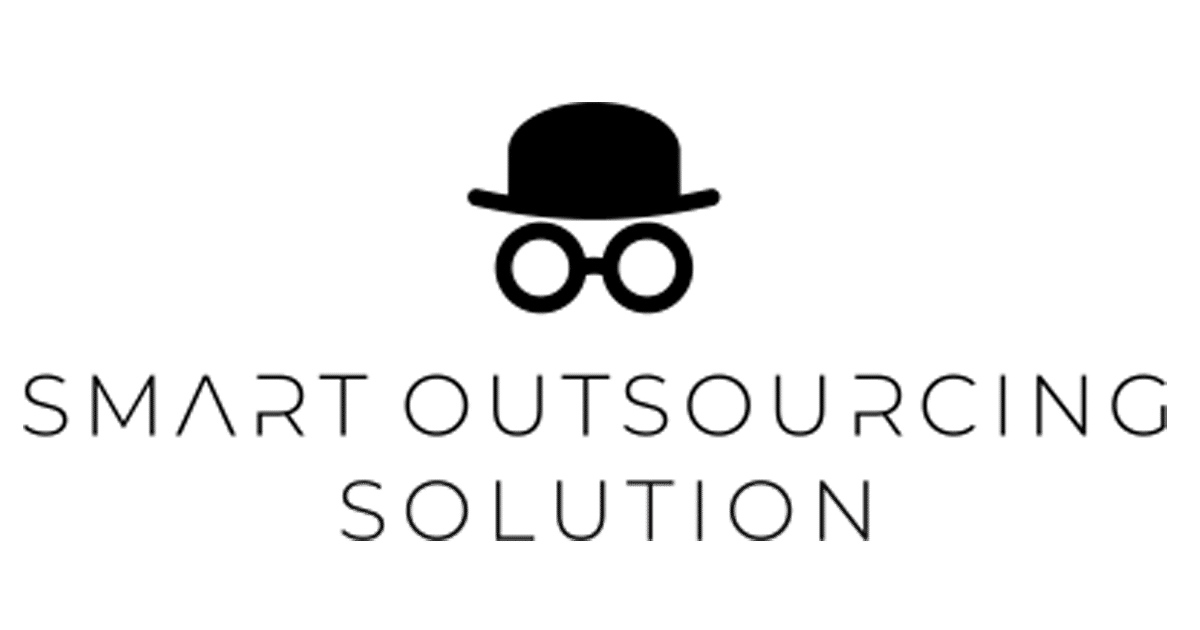The Complete Cost Breakdown of Employer of Record Services – No Surprises
Date updated: October 16, 2025
TL;DR — EOR pricing breakdown (Philippines)
EOR pricing in the Philippines starts at a flat $190/employee/month with Smart Outsourcing Solution. Your real-world total changes with statutory contributions, 13th-month accrual, FX, and any optional benefits. Use PHP as your base currency for calculations; convert to USD last.
Compare workflow
- Check fees here (Hidden-fee checklist).
- Confirm base price & FX policy → Employer of Record Pricing (Philippines 2025).
- Run totals with salary/statutory → EOR Pricing Breakdown.
How we calculate totals (PHP → USD)
Method (short): We calculate salary and statutory items in PHP, then convert to USD at the day’s bank spot rate. The EOR fee is billed in USD and added after conversion. Unknowns aren’t guessed—verify against the official SSS, PhilHealth, and Pag-IBIG pages before finalizing.
Formula:
Let Salary₱ = monthly gross salary (PHP), Statutory₱ = employer SSS + PhilHealth + Pag-IBIG + 13th-month accrual (PHP), FX = PHP per 1 USD (bank spot on payroll/invoice date), EOR_fee$ = 190.
Total$ = (Salary₱ + Statutory₱) / FX + EOR_fee$
(Add optional benefits/admin if applicable.)
FX note: Fees are billed in USD. Salary and statutory items are computed in PHP and converted at the daily bank spot rate on the payroll/invoice date; we do not add an FX markup to statutory amounts. Please confirm your bank’s rate on the day.
Hidden-fee reminder: Some providers add setup charges, FX spreads, country premiums, off-cycle payroll fees, or exit fees.
Worked examples (replace FX with the live rate you use)
Assumption for illustration only:
FX = ₱56.00 / USD. Before publishing, plug in your actual FX and verified statutory amounts; then update the date at the bottom of this section.
Example A — Virtual Assistant (entry level)
-
Salary₱: ₱35,000
-
Statutory₱: ₱4,550 (employer SSS + PhilHealth + Pag-IBIG + 13th-month accrual; verify from current tables)
-
Subtotal₱: ₱39,550
-
Convert to USD: ₱39,550 / 56.00 = $706.25
-
Add EOR fee: + $190
-
Illustrative total: $896.25 / month
Example B — CX Agent (mid band)
-
Salary₱: ₱60,000
-
Statutory₱: ₱7,800 (verify from current tables)
-
Subtotal₱: ₱67,800
-
Convert to USD: ₱67,800 / 56.00 = $1,210.71
-
Add EOR fee: + $190
-
Illustrative total: $1,400.71 / month
Example C — Senior Full-Stack Developer
-
Salary₱: ₱160,000
-
Statutory₱: ₱20,800 (verify from current tables; contribution caps may apply)
-
Subtotal₱: ₱180,800
-
Convert to USD: ₱180,800 / 56.00 = $3,228.57
-
Add EOR fee: + $190
-
Illustrative total: $3,418.57 / month
Verification note: Replace FX and Statutory₱ with live figures from official agency tables before publishing.
Last verified: 2025-09-15
Hidden-fee checklist: Before you compare providers, scan for setup, FX spreads, benefit administration markups, off-cycle payroll charges, and exit fees
PH Cost Reality Check
Reality check #1 — FX slippage
What it is: Hidden loss when funding currency converts to PHP for payroll.
Why it bites: A small spread applied monthly compounds over headcount.
What to do: Fund in PHP where possible or negotiate FX terms; always quote totals in PHP and show USD only for reference.
Reality check #2 — Benefits uplift vs. “cheapest” headline
What it is: Enhanced HMO/allowances can add meaningful PHP per employee.
Why it bites: Headline fees ignore benefits; totals look off at payroll.
What to do: Present Basic vs. Enhanced side-by-side; approve benefits at hiring and bake into the monthly total.
Reality check #3 — 13th-month accrual & statutory updates
What it is: 1/12 salary accrual plus agency rate changes during the year.
Why it bites: Under-accrual creates year-end shocks; rate updates mid-year.
What to do: Accrue monthly, re-sync when agencies publish updates, and show pro-rated amounts on partial-year employment.
Next steps: Build your total on the pricing breakdown and worked examples, then compare providers.
• Best providers (2025)
Introduction: Why Pricing Transparency Matters in EOR Decisions
Selecting an Employer of Record (EOR) is more than hiring offshore staff; it’s a financial and operational decision. Hidden fees, unclear FX handling, and markup charges can add thousands to your monthly payroll costs. Transparent pricing ensures you can forecast budgets accurately, avoid unpleasant surprises, and maintain trust with your remote team.
Two Main Models: Flat Fee vs % of Payroll
Flat Fee:
A fixed monthly fee per employee, covering payroll, statutory benefits, and compliance. Predictable and easy to budget, ideal for startups and fast-growing teams.
% of Payroll:
Charges a percentage of employee salaries. While scalable, it can increase costs unpredictably if salaries rise or benefits change. Often, hidden FX spreads or service fees are added.
Pros & Cons Table
| Model | Pros | Cons |
|---|---|---|
| Flat Fee | Predictable, simple budgeting | May not include add-ons |
| % of Payroll | Scales with salaries | Less predictable, hidden fees possible |
Common Hidden Costs in the Market
-
Setup Fees: Upfront costs often non-refundable if you switch providers.
-
FX Spreads: Currency conversion fees can inflate salary costs for offshore staff.
-
Benefit Markups: Some providers increase statutory or optional benefits costs without clear disclosure.
-
HRIS Access Fees: Access to employee management systems sometimes comes as an extra subscription.
FX Handling and Currency Risks
-
Currency fluctuations affect actual payroll costs.
-
Providers may apply FX spreads, adding up to 3–5% per transaction.
-
SOS offers transparent FX handling with no hidden markups, ensuring predictable budgets for global teams.
Comparison Table: Transparent vs Non-Transparent Pricing
| Provider | Transparent Pricing | Setup Fees | FX Markup | Benefit Markup |
|---|---|---|---|---|
| Smart Outsourcing Solution | ✅ Yes | None | None | None |
| Average Competitors | ❌ No | $500–$3,000 | 2–5% | 5–10% |
How SOS Prices EOR Services: Example Cost Breakdown
-
Monthly Fee: $190 per employee
-
Inclusions: Payroll, statutory benefits, compliance, reporting
-
Add-ons: Optional services like HRIS or specialized compliance handled separately and fully itemized
-
FX Fees: None; fully transparent
Checklist: Questions to Ask Providers About Hidden Fees
- Are there any setup or onboarding fees?
- Do you charge FX or currency conversion spreads?
- Are statutory and optional benefits markups included?
- Is HRIS access part of the package or extra?
- Are optional services itemized upfront?
- Are termination or exit fees applied?
- Can you provide a full example cost per employee?
Expanded FAQ – Transparent EOR Pricing
Q1: How are EOR fees structured?
A: EOR fees are typically structured as a flat monthly fee per employee. At SOS, this includes payroll, statutory benefits, compliance reporting, and legal obligations. Optional services are itemized separately. Flat fees make budgeting predictable and prevent unexpected increases due to salary adjustments or regulatory changes.
Q2: Are there any hidden setup or onboarding fees?
A: No. SOS charges no setup fees, and all onboarding costs are included in the standard monthly rate. Unlike many competitors, there are no surprise expenses, ensuring businesses can plan accurately and scale globally without additional financial hurdles.
Q3: How does FX and currency handling work?
A: SOS handles all salary payments in local currency with no hidden FX spreads. Competitors may apply 2–5% markups during currency conversion. Transparent handling ensures predictable payroll costs and avoids financial discrepancies for offshore teams.
Q4: Are statutory benefits and optional add-ons marked up?
A: SOS includes standard statutory benefits in its flat fee. Optional add-ons such as enhanced insurance or HRIS access are agreed upfront and itemized, preventing hidden costs and maintaining total transparency.
Q5: How do I compare transparent vs non-transparent pricing?
A: Evaluate setup fees, FX spreads, benefit markups, and additional charges. Transparent pricing, like SOS, has none, whereas many providers include hidden percentages or additional service fees that inflate the total cost.
Q6: Can I see a cost breakdown for one employee?
A: Yes. For example, SOS charges $190 per employee per month, including payroll, compliance, and statutory benefits. Any optional services are separately listed, providing a full view of total costs and preventing unexpected expenses.
Q7: Are there termination or exit fees?
A: No. SOS does not charge exit fees, ensuring flexibility. Clients can terminate month-to-month agreements with a 30-day notice, and all compliance handovers are handled smoothly without additional charges.
Q8: Do EOR costs differ across countries?
A: Costs vary based on local labor laws and statutory benefits. SOS provides country-specific pricing and ensures all fees are transparent, allowing businesses to plan accurately across multiple jurisdictions.
Q9: How can I ensure no hidden fees?
A: Always request a detailed fee schedule, confirm FX handling, verify benefit inclusions, and ask for itemized optional services. SOS provides full transparency to prevent surprises and maintain financial control.
Conclusion
Transparent pricing ensures businesses avoid hidden costs, FX markups, and unexpected benefit fees. SOS provides flat-rate, fully transparent EOR pricing starting at $190 per employee, covering compliance, payroll, and statutory benefits.
Talk to Smart Outsourcing Solution today and secure predictable, risk-free global staffing.
About the Author
Phil Murphy is a founding partner of Smart Outsourcing Solution (SOS) and a seasoned expert in offshore staffing, employer of record (EOR) services, and remote team operations. With over three decades of experience in the BPO industry across Australia, the Philippines, and the UK, Phil has supported major brands such as Qantas and Telstra in building high-performing global teams. He advises startups, scale-ups, and established enterprises on staff leasing models, compliance risk, and workforce optimisation across Southeast Asia. Phil is a sought-after voice on topics such as EOR, AOR, and BOT models, and frequently shares insights on balancing operational efficiency with cultural alignment in distributed workforces.



